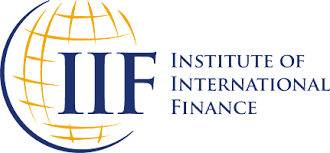A new report published by the Institute of International Finance (IIF) indicated that global debt stock reached a historic high of $307.4 trillion in the third quarter of 2023, with the debt-to-output ratio in emerging markets reaching an unprecedented level during the quarter
In the latest report published on Thursday, the financial services trade group anticipated that global debt would surpass $310 trillion by the end of this year, representing over 25% increase in the past five years.
The institute warned that a shift towards political populism by global countries could further exacerbate the surging debt levels in the coming year.
Commenting on the report’s findings, the Director of Sustainable Research at the IIF, Emre Tiftik, cautioned that the servicing of debt was accounting for a growing portion of revenues globally, reaching “alarming” levels in countries such as Pakistan and Egypt.
According to him, the Institute projects that in the United States, government interest expenses are expected to reach 15% of revenue by 2026, up from the current level of less than 10%.
The report further indicated that in the quarter under review, two-thirds of the increase in debt originated from developed markets, with notable contributions from the United States, Japan, France, and the United Kingdom just as merging markets, including China, India, Brazil, and Mexico, also experienced significant upticks in debt.
The IIF noted that although the global debt-to-GDP ratio remained relatively stable at 333%, it surged to 255% in emerging markets, marking a 32-percentage-point increase compared to the same period five years ago.
It linked the surge particularly to Russia, China, Saudi Arabia, and Malaysia but that conversely, Chile, Colombia, and Ghana witnessed the most substantial declines in this ratio.
The IIF further clarified that government debt most significantly surged in the third quarter, highlighting that budget deficits persist well above pre-pandemic levels in numerous countries.
On household debt profile, the Institute cautioned that the debt load for households and corporations continued to escalate in key economies, such as China and the United States, with potential implications for various aspects ranging from elections to the transition to clean energy.






